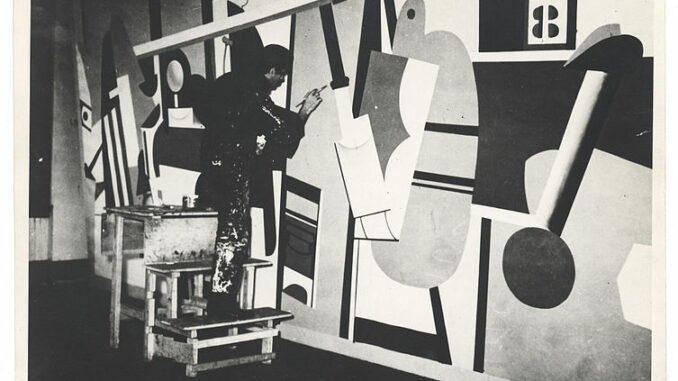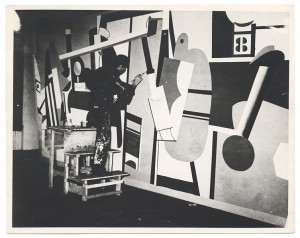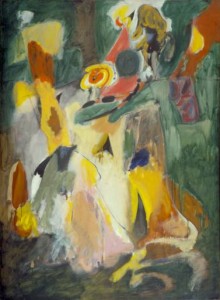
Starting in the 1920s, New York City was the centre of art practice in America, and had art students cramming in to live amongst the artistic milieu. They wanted to move away from more staid ‘mechanical drawing’ techniques practiced in the rest of America, and, ‘for obvious utilitarian reasons’, join a bohemia which was focused around the Greenwich Village.[1] Artists were influenced by literature and philosophy, and the unconventional atmosphere encouraged a freedom of self-expression. The majority were closely associated with the few galleries in existence that slowly began admitting and showing modern art. The art looked closely towards its European counterpart, and when Matisse won the Carnegie International Prize for his retrospective at the Valentine Dudensing Gallery in 1926/27, there was a public scandal over Brancusi, which helped focus attention and interest on modern art in America.
Artists were highly influenced by these publicised events and found that with a world slowly opening up to modern art, there came greater prospects and artistic opportunity. However, with the stock market crash and Great Depression of the early 1930s creating a period of great economic instability in America, the development of art at this time was impacted as artists struggled to survive through this upheaval. One early inhabitant of the New York School working at the time of the Great Depression was Arshile Gorky, who emigrated to the United States in 1920 from Armenia. Gorky’s early exhibitions, such as those at the Mellon galleries in Philadelphia, made apparent his knowledge of modern art, and his experimentation with European Cubist and Surrealist styles of art. All around him, the artists of Greenwich Village inclined to the political left, and painters-turned-politicians came together artistically in support of Radicalism, depicting cults of widespread political extremist behaviour during the Depression years. What to do without paint and canvas became the artist’s main concern in this accelerated period of social change, as ‘breadlines where silent, resentful, broken men filled the New York air.’[3]
Born in 1904 in Khorkom Vari Haiyotz Dzore, Armenia, Arshile Gorky was able to escape the Great Depression of the 1930s to some extent by working, like many other artists did, for the Works Progress Administration (WPA). This public body, set up by the Roosevelt administration, federally sponsored public works projects, which helped establish an artistic community for the first time during the Depression. Artists were employed to produce murals and posters, and assist as teachers, and ‘for the first time in their lives, they could devote all their time to their work.’[4]

The WPA facilitated the bringing together of artists and society, as demonstrated by Gorky’s Newark Airport mural. Installed in 1937, the Newark Airport mural was originally intended for Floyd Bennet Airfield but the 1500 sq ft work over ten separate panels allowed Gorky more space to experiment with the size of paintings, and use large expanses of colour in his compositions. This was the first abstract mural commission which allowed for the permanent public display of Gorky’s art, and guaranteed his reputation. Gorky’s devolution of forms reveals a Cubist stylisation carried out along decorative lines to express those elements distorted by velocity. This ‘jazzy Cubism’ was used to depict an aeroplane, which had been transposed from a photograph, using a colour scheme to reflect the murals environment.[5] It shows how Gorky was ‘neither rendering an abstract emblem for the forms nor rigorously surveying the displacement of volumes.’[6] Unlike the drawings of Arshile Gorky, which were included, along with a study for the Newark Airport mural, in a retrospective at the Whitney Museum of American Art in January 2004, the mural had to conform to the public intentions of the WPA. Gorky’s drawings instead gradually metamorphose from identifiable objects into abstractions.
inspired the famous first generation of the New York School, and the way he is now internationally recognised as a leading Abstract Expressionist.


Leave a Reply